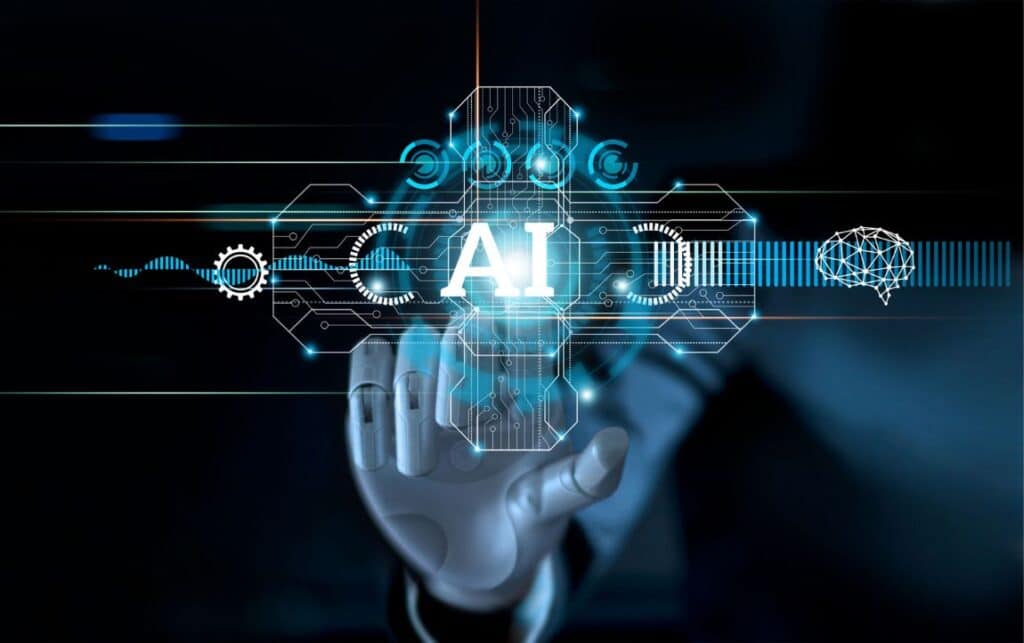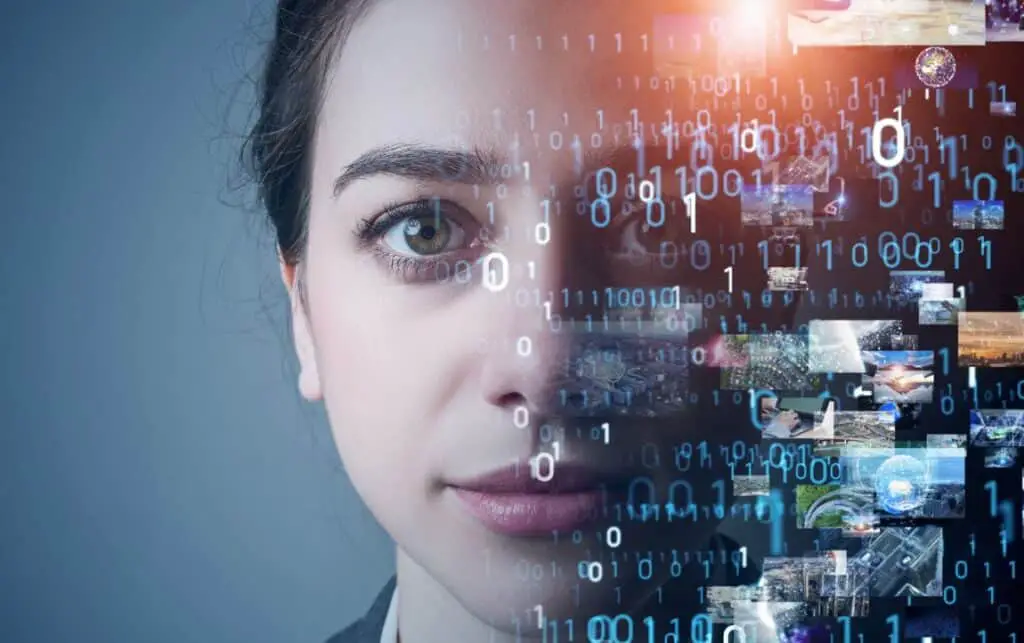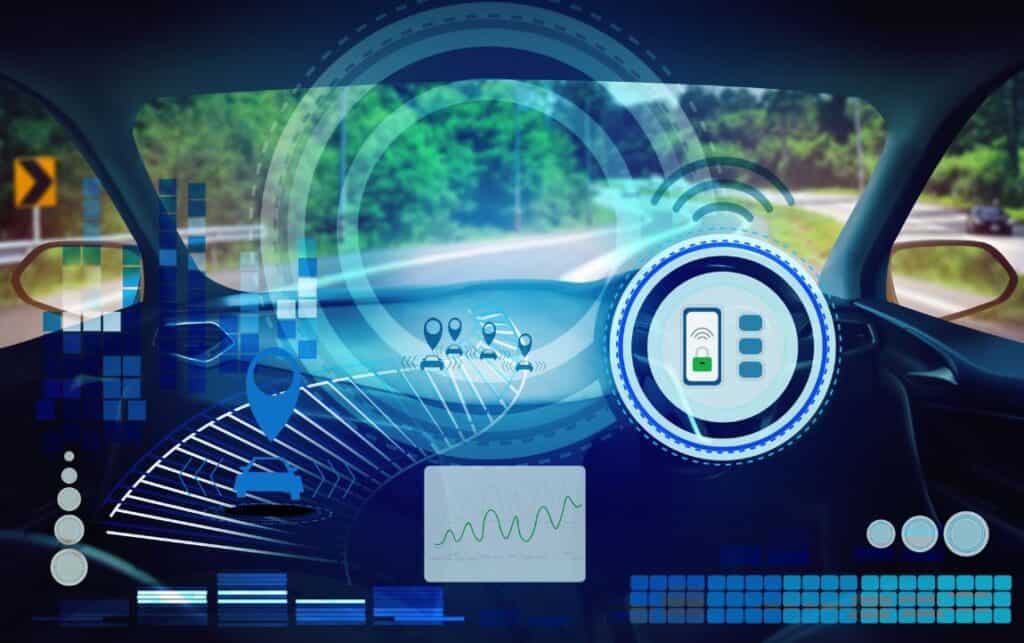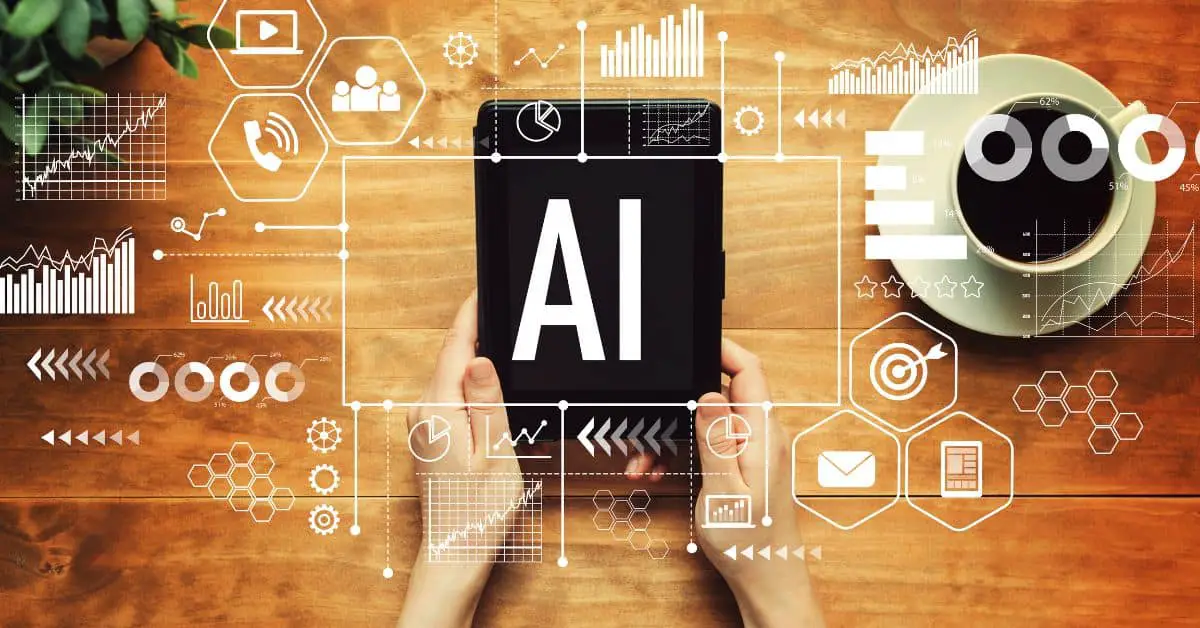What Is Artificial Intelligence (AI) & How Does It Work?
Understanding AI
In general terms, artificial intelligence systems are capable of executing tasks usually linked to human cognitive abilities, such as understanding speech, participating in games, and recognizing patterns.
They often learn to do this by analyzing vast amounts of data, searching for patterns to emulate in their decision-making process.
In many instances, humans oversee an AI’s learning progression, encouraging positive decisions and discouraging negative ones.
However, some AI systems are created to learn autonomously – for example, repeatedly playing a video game until they eventually deduce the rules and strategies for victory.

Types Of AI
Strong AI
Strong AI, also referred to as artificial general intelligence, is a machine capable of solving problems it has never been trained on, much like humans can.
This form of AI is often depicted in movies, such as the robots in Westworld or the character Data in Star Trek: The Next Generation. However, this type of AI does not yet exist.
Developing a machine with human-level intelligence that can tackle any task is considered the ultimate goal for numerous AI researchers.
However, the pursuit of artificial general intelligence has been laden with challenges.
Some even argue that strong AI research should be restricted due to the potential dangers of creating powerful AI without proper safeguards.
In comparison to weak AI, strong AI embodies a machine with a comprehensive range of cognitive capabilities and an equally vast array of applications. Yet, the passage of time has not made achieving this goal any easier.
Weak AI
Weak AI, also known as narrow AI or specialized AI, functions within a restricted context and simulates human intelligence when applied to a narrowly defined issue (such as driving a car, transcribing human speech, or managing content on a website).
Weak AI typically concentrates on excelling at a single task. Although these machines may appear intelligent, they operate with more constraints and limitations than the most basic human intelligence.
Examples of weak AI include:
- Siri, Alexa, and other smart assistants
- Autonomous vehicles
- Google search
- Chatbots
- Email spam filters
- Netflix’s recommendations
WISELIVN DAILY
Make your inbox healthier and happier with the latest WiseLivn Media stories, delivered fresh daily. Will be used in accordance with our Privacy Policy.
Difference Between Machine Learning Vs. Deep Learning
While the terms “machine learning” and “deep learning” are often mentioned in discussions about AI, they should not be considered synonymous.
Deep learning is a subset of machine learning, and machine learning is a subdomain of artificial intelligence.
Machine Learning
A machine learning algorithm receives data input from a computer and employs statistical methods to help it “learn” how to improve at a task progressively, without being explicitly programmed for that specific task.
Instead, ML algorithms utilize historical data as input to predict new output values. As a result, ML encompasses both supervised learning (where the expected output for the input is known due to labeled datasets) and unsupervised learning (where the expected outputs are unknown because of unlabeled datasets).
Deep Learning
Deep learning is a kind of machine learning that processes inputs through a biologically inspired neural network structure.
These neural networks consist of several hidden layers where the data is processed, enabling the machine to dive “deep” into its learning, establishing connections, and adjusting input weights for optimal results.
Examples of Artificial Intelligence
AI can be classified into four categories based on the type and complexity of tasks a system can perform. These categories include:
- Reactive Machines
- Limited Memory
- Theory Of mind
- Self-Awareness
Reactive Machines
Reactive machines adhere to the most basic AI principles and, as the name suggests, are only capable of perceiving and reacting to their immediate surroundings.
They cannot store memory, and therefore, cannot rely on past experiences for real-time decision-making.
Focusing on a narrow set of specialized tasks, reactive machines are designed intentionally with a limited worldview.
This constraint has its advantages: such AI systems are more reliable and consistent, responding identically to the same stimuli every time.
Reactive Machine Examples:
- Deep Blue, an IBM-designed chess-playing supercomputer from the 1990s, defeated international grandmaster Garry Kasparov in a game. Deep Blue could only identify chess pieces, understand their legal moves, recognize their current positions, and determine the most logical move at that moment. The computer did not anticipate future moves by the opponent or try to strategically position its own pieces. Each turn was treated as an independent event, disconnected from previous moves.
- Google’s AlphaGo, while not evaluating future moves either, leverages its neural network to analyze the current game state, giving it an advantage over Deep Blue in more complex games. AlphaGo also defeated world-class players, including Go champion Lee Sedol in 2016.

Limited Memory
Limited memory AI can store past data and predictions while gathering information and evaluating potential decisions, essentially using past insights to predict future outcomes.
Limited memory AI is more sophisticated and offers greater possibilities than reactive machines.
Limited memory AI is developed when a team continuously trains a model to analyze and use new data, or when an AI environment is designed to automatically train and update models.
When implementing limited memory AI in machine learning, six steps must be followed:
- Define training data
- Develop the machine learning model
- Ensure the model can make predictions
- Enable the model to receive human or environmental feedback
- Store human and environmental feedback as data
- Repeat the steps above in a cyclical manner
Theory Of Mind
The theory of mind is currently a hypothetical concept in AI, as we have not yet achieved the technological and scientific advancements required to attain this level of artificial intelligence.
This idea is rooted in the psychological principle of recognizing that other beings possess thoughts and emotions that influence their behavior.
In the context of AI, this would imply that machines could comprehend the feelings and decision-making processes of humans, animals, and other machines through introspection and understanding, then use that knowledge to make their own decisions.
Essentially, machines would need the ability to grasp and process the notion of “mind,” the role of emotions in decision-making, and various other psychological concepts in real-time, fostering a dynamic relationship between humans and AI.
Self-Awareness
Once the theory of mind is established, which is expected to occur far into the future of AI, the final milestone will be achieving self-awareness in AI.
This type of AI possesses human-level consciousness and is aware of its own existence and the presence and emotional states of others.
It would be capable of discerning what others might need based on not only the content of their communication but also the manner in which they convey it.
Developing self-awareness in AI depends on human researchers first comprehending the nature of consciousness and then learning how to replicate it so that it can be integrated into machines.
WISELIVN DAILY
Make your inbox healthier and happier with the latest WiseLivn Media stories, delivered fresh daily. Will be used in accordance with our Privacy Policy.
Artificial Intelligence Examples
AI technology encompasses various forms, from chatbots and navigation apps to wearable fitness trackers. The following examples demonstrate the wide array of potential AI applications.
ChatGPT
ChatGPT is an AI-powered chatbot that can generate written content in diverse formats, such as essays, code, and answers to simple questions.
Introduced by OpenAI in November 2022, ChatGPT relies on a large language model that enables it to closely mimic human writing.
Google Maps
Google Maps utilizes smartphone location data and user-reported information, like construction sites and car accidents, to monitor traffic patterns and determine the fastest routes.
Smart Assistants
Personal assistants like Siri, Alexa, and Cortana employ natural language processing (NLP) to interpret user instructions for setting reminders, searching online information, and controlling home lighting.
These assistants are often designed to learn user preferences and enhance their experience over time with more accurate suggestions and tailored responses.
Snapchat Filters
Snapchat filters leverage machine learning algorithms to differentiate between an image’s subject and background, track facial movements, and adjust the on-screen image based on the user’s actions.

Self-Driving Cars
Autonomous vehicles represent a prominent example of deep learning, as they use deep neural networks to detect surrounding objects, measure distances from other vehicles, recognize traffic signals, and more.
Wearables
Wearable sensors and devices in the healthcare industry also apply deep learning to evaluate a patient’s health status, including blood sugar levels, blood pressure, and heart rate.
These devices can also identify patterns from previous medical data and use that information to predict future health conditions.
MuZero
DeepMind’s MuZero is a leading contender in the pursuit of true artificial general intelligence.
The computer program has demonstrated its ability to master games it has not been explicitly taught, such as chess and a collection of Atari games, by using brute force to play millions of times.
WISELIVN DAILY
Make your inbox healthier and happier with the latest WiseLivn Media stories, delivered fresh daily. Will be used in accordance with our Privacy Policy.
AI Benefits, Challenges & Future
Benefits
AI offers numerous advantages, ranging from accelerating vaccine development to automating the detection of potential fraud.
In 2022, AI companies raised $66.8 billion in funding, more than double the amount raised in 2020, according to CB Insights research.
As a result, AI is transforming various industries at a rapid pace.

Banking
Business Insider Intelligence’s 2022 report on AI in banking revealed that over half of financial services companies already utilize AI solutions for risk management and revenue generation.
The implementation of AI in banking could lead to savings exceeding $400 billion.
Medicine
A 2021 World Health Organization report acknowledged that while integrating AI into healthcare presents challenges, the technology holds great promise.
Potential benefits include more informed health policies and improved accuracy in diagnosing patients.

Media
AI has also made significant strides in entertainment.
The global market for AI in media and entertainment is projected to reach $99.48 billion by 2030, up from $10.87 billion in 2021, according to Grand View Research.
This growth encompasses AI applications such as plagiarism detection and high-definition graphics development.
Challenges & Limitations of AI
Despite its importance and rapid evolution, AI also comes with several drawbacks.
In 2021, the Pew Research Center surveyed 10,260 Americans regarding their attitudes toward AI.
The results showed that 45% of respondents were equally excited and concerned, while 37% were more concerned than excited.
Additionally, over 40% of respondents deemed driverless cars detrimental to society.
However, using AI to identify the spread of false information on social media was better received, with nearly 40% of those surveyed considering it a good idea.
AI is beneficial for enhancing productivity and efficiency while reducing the potential for human error.
However, there are also disadvantages, such as development costs and the risk of automated machines replacing human jobs.
It is worth noting, though, that the AI industry is expected to create new job opportunities, some of which have yet to be invented.
WISELIVN DAILY
Make your inbox healthier and happier with the latest WiseLivn Media stories, delivered fresh daily. Will be used in accordance with our Privacy Policy.
Future Of Artificial Intelligence
Considering the computational costs and technical data infrastructure required for AI, its implementation is complex and expensive.
Fortunately, significant advancements in computing technology have occurred, as evidenced by Moore’s Law, which states that the number of transistors on a microchip doubles approximately every two years while the cost of computers is halved.
Although many experts predict that Moore’s Law will likely end sometime in the 2020s, it has greatly influenced modern AI techniques.
Without it, deep learning would be financially unfeasible. Recent research discovered that AI innovation has outperformed Moore’s Law, doubling roughly every six months instead of two years.
Given this trend, AI has made tremendous progress across various industries in recent years. The potential for even greater impact in the coming decades appears highly likely.

